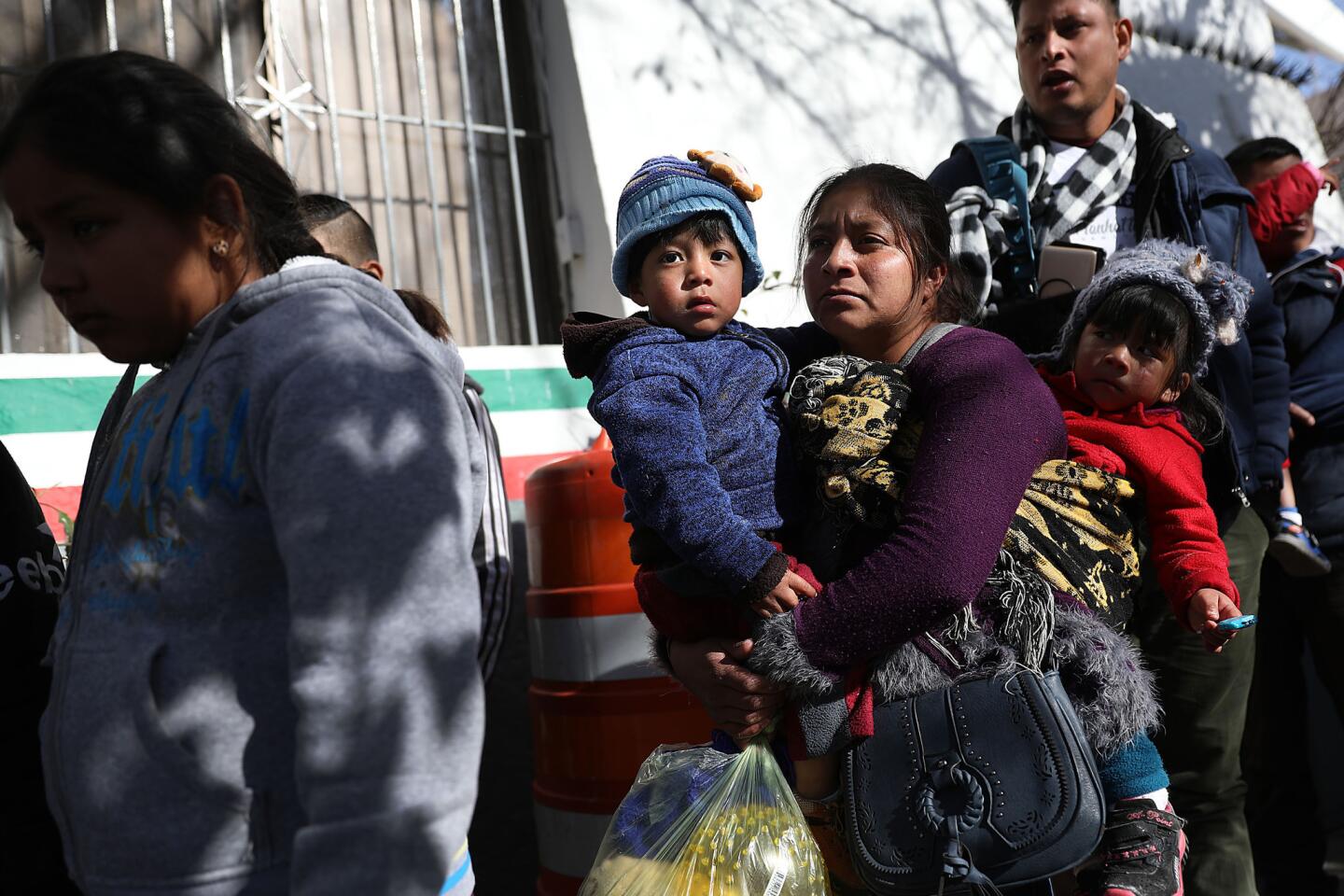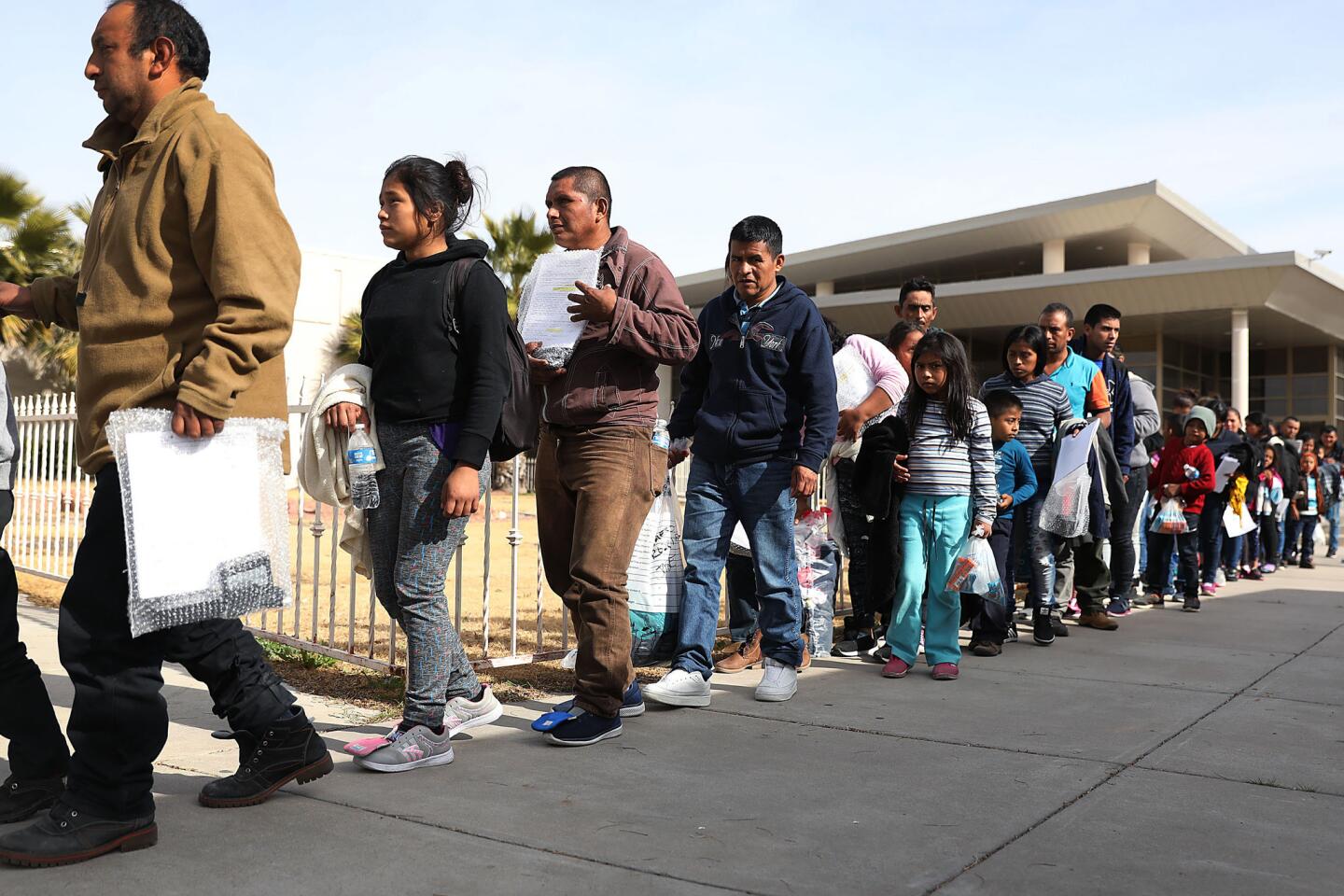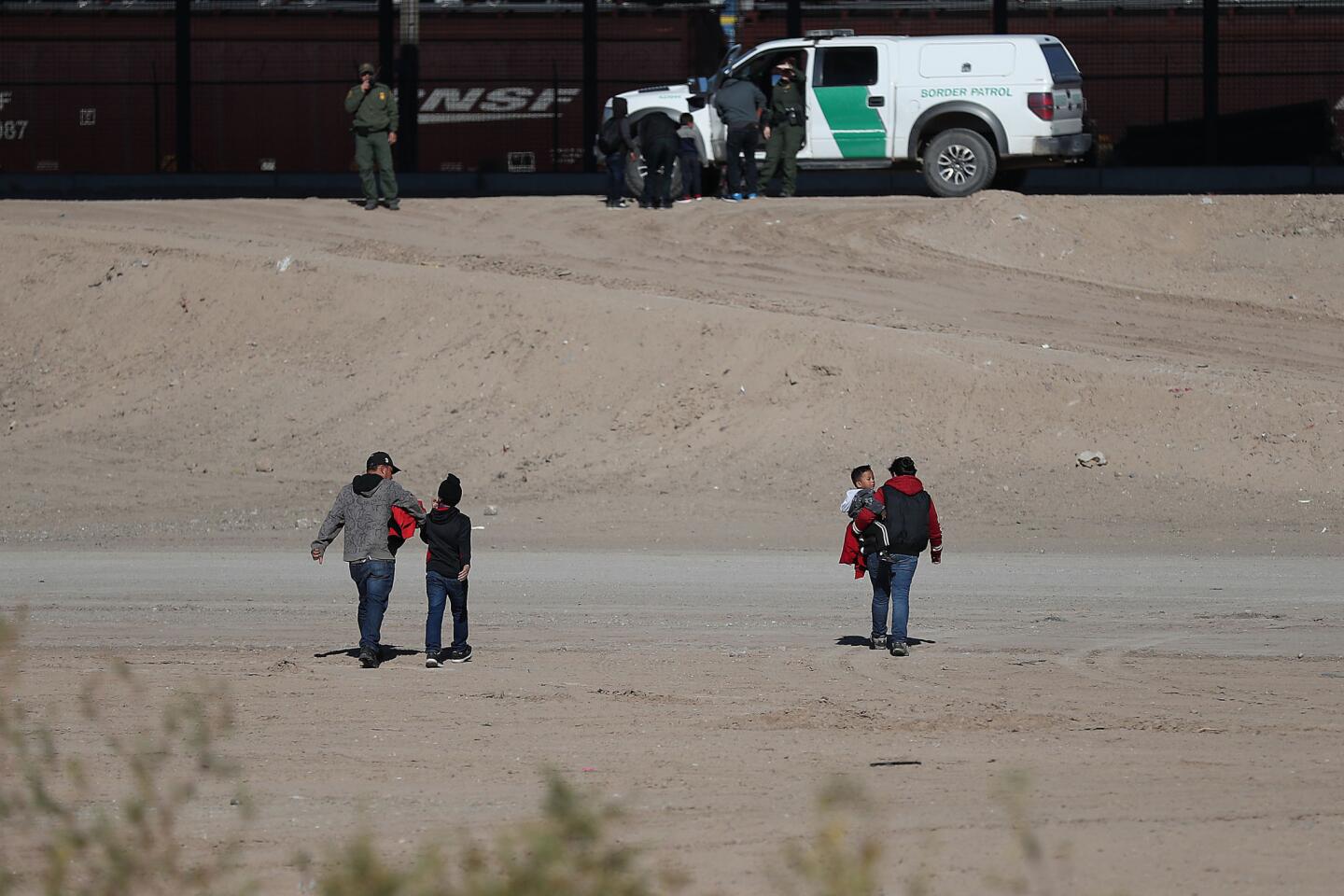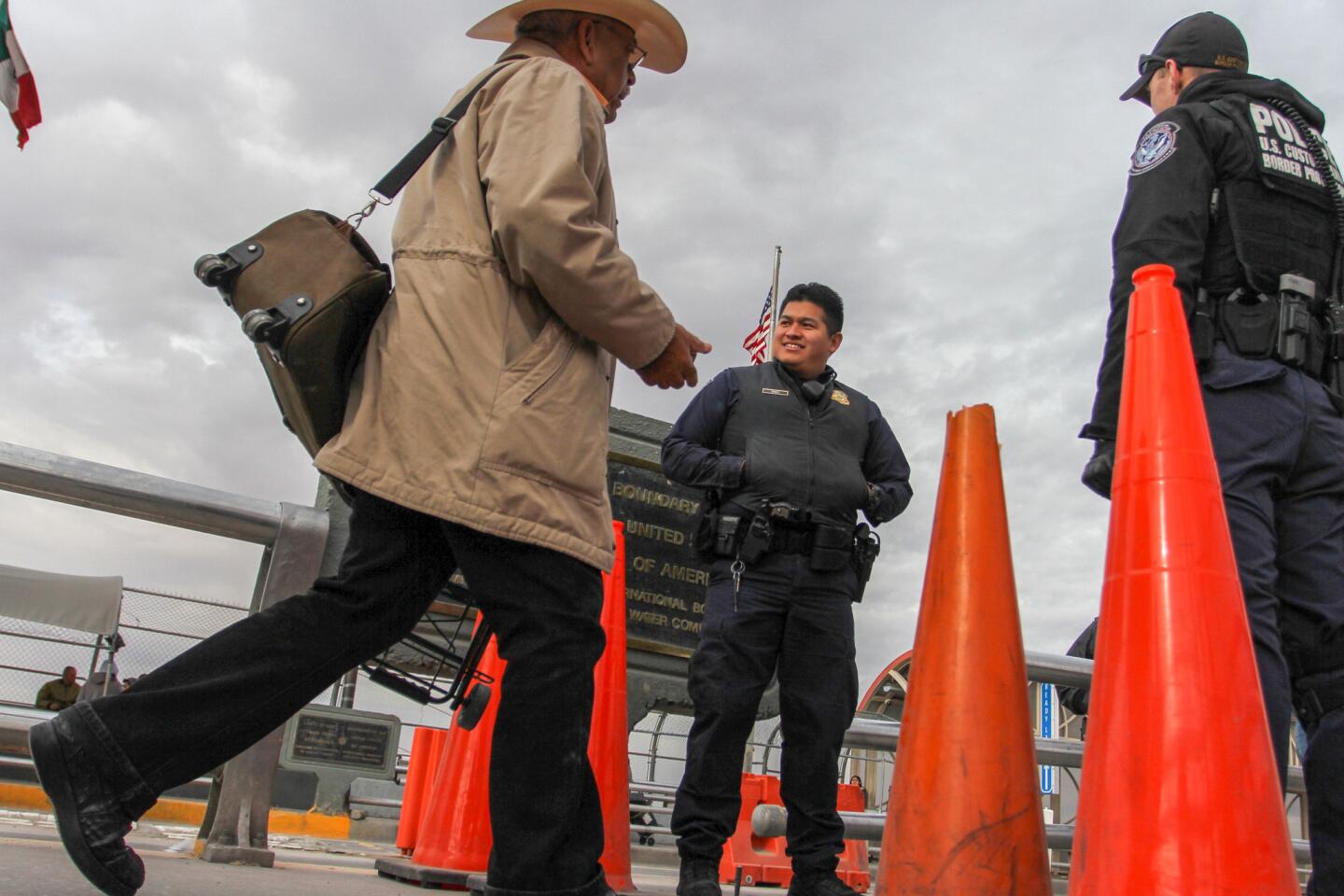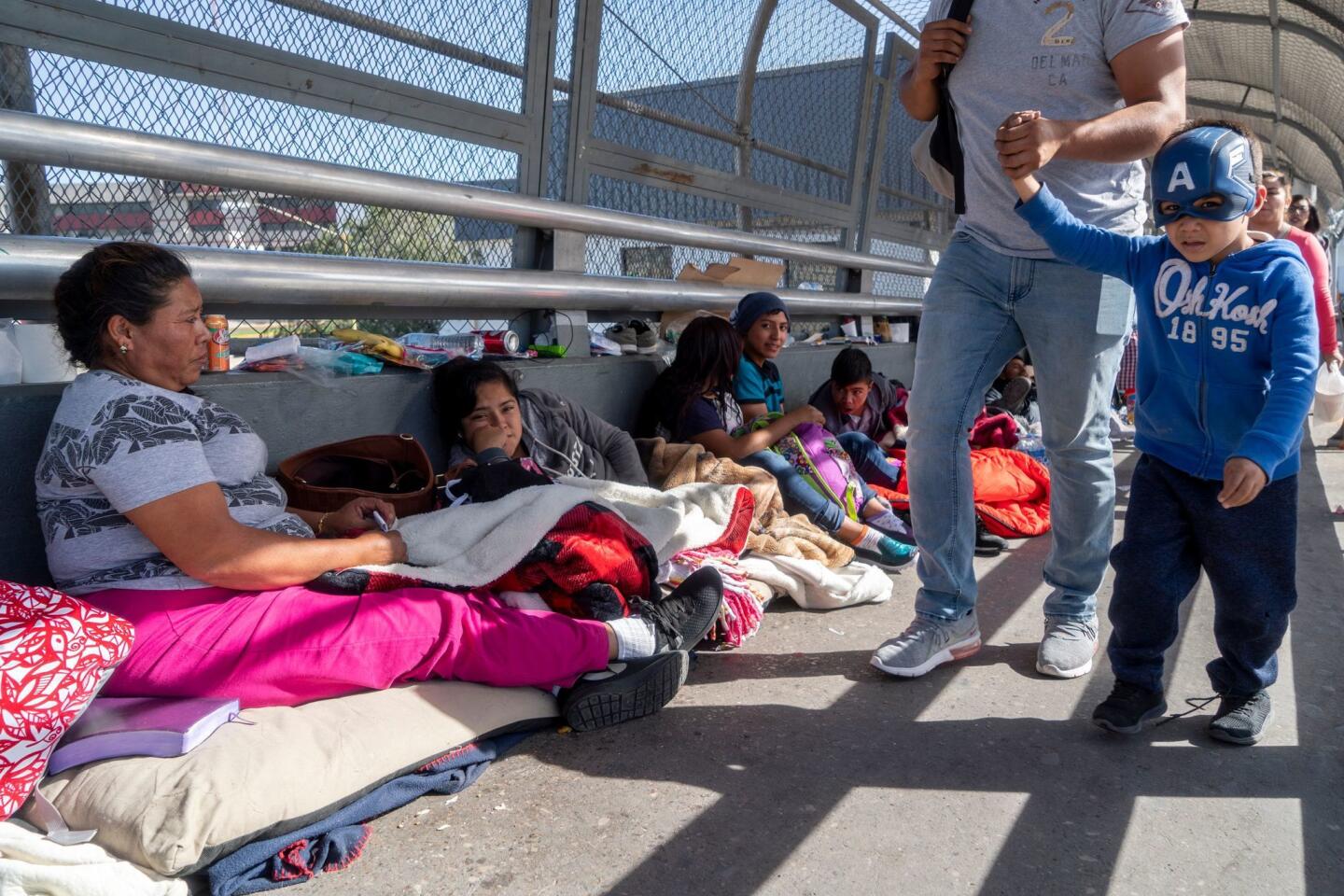U.S. border officials finalized plans Thursday to require asylum seekers to remain in Mexico while their cases are considered in the United States, the latest escalation of the Trump administration’s immigration crackdown.
Border officers will start pushing asylum applicants back across the border as soon as orders become operational on Friday, beginning at the San Ysidro Port of Entry in San Diego, a Homeland Security official said on condition of anonymity to discuss internal planning.
Until now, most migrants seeking asylum were released from detention into the United States while awaiting a court hearing, a process that can take years because of backlogs.
Migrant advocates say implementing the plan will put asylum seekers at risk by requiring them to wait in Mexican border cities with some of the deadliest homicide rates in the world.
On Dec. 20, Homeland Security Secretary Kirstjen Nielsen announced the policy shift to force asylum seekers to remain in Mexico, hailing the measure as “historic.” Operations on the border did not change over the last month, however.
On Wednesday, U.S. Citizenship and Immigration Services officials briefed asylum workers on how to interview individuals affected under the new policy, saying it would be rolled out quickly, according to a federal employee who spoke on condition of anonymity to discuss the internal planning.
Arturo Rocha, a spokesman for Mexico’s Foreign Ministry, said Thursday that U.S. officials had not informed his government that they were beginning to implement the policy.
“We have not been officially notified by the U.S. government of their intention to implement today,” Rocha told The Times.
Mexican officials said in December, when Nielsen announced the plan, that they would cooperate on a temporary basis, allowing non-Mexican migrants to remain in Mexico for humanitarian reasons.
It wasn’t clear Thursday how Mexico would respond to U.S. officials pushing asylum seekers back, however.
Sen. Christopher S. Murphy (D-Conn.), who sits on the Senate Appropriations and Foreign Relations committees, said U.S. courts are likely to block the shift in asylum policy.
“They can’t do that. The courts will stop them from doing that,” he said. “I think it will be short-lived.”
The crackdown comes as President Trump continues to clash with Congress over his demand for $5.7 billion for a border wall, a dispute that led to a partial government shutdown on Dec. 22.
On Saturday, Trump said he would consider a deal to end the impasse that would include temporary deportation relief for some immigrants already in the United States. Democrats have said they will negotiate after Trump agrees to reopen the government.
The new asylum policy could directly affect thousands of migrants from Central America who are stuck on the Mexican side of the border, or are now approaching it in hopes of seeking asylum.
Thousands of migrants have gathered on Mexico’s southern border with Guatemala, awaiting “humanitarian” visas to enable them to head north, and the group continues to grow. Mexico has received more than 12,000 petitions for the visas, which are good for a year and allow recipients to work in Mexico and travel freely in the country, officials said.
Trump argued this week that Central American countries are encouraging people to leave, although no evidence suggests that is true.
“I actually think they encourage the caravans because they want to get rid of the people from their country,” Trump said Wednesday at the White House.
“We have a lot of very dangerous people that want to come into our country,” he added. “And we’re not letting them in.”
Since December, U.S. Citizenship and Immigration Services personnel have been stationed at the San Ysidro crossing and other Border Patrol stations in California, and a recent recruitment effort added to their ranks.
A Homeland Security official said Customs and Border Protection agents will take applicants who they determine must wait in Mexico to a gate at San Ysidro typically used for deportations.
Before asylum applicants are released from U.S. custody and returned to Mexico, they will get a “notice to appear” that requires them to return to the San Ysidro entry on a specific date for U.S. officials to take them to a hearing in downtown San Diego, the Homeland Security official said.
The official said border personnel will set up a telephone number to call for updates on their cases.
Citing Department of Justice guidance to immigration judges, the official said cases should be expedited so asylum applicants don’t wait more than a year.
That would be a dramatic shift. Current cases face a wait time of nearly two years in immigration courts, according to Syracuse University’s Transactional Access Records Clearinghouse.
The policy of returning applicants to Mexico will not be applied to unaccompanied minors or other vulnerable groups, such as pregnant women or migrants who are ill, the official said.
For other asylum applicants, if they do not express fear of returning to Mexico, pushing them back will be the default process.
“If they express a fear of returning to Mexico, this doesn’t apply,” the official said.
In her Dec. 20 announcement, Nielsen said the administration had decided on its own to change long-standing immigration policy that enabled most asylum seekers to be released in the U.S while awaiting a hearing.
U.S. officials have provided few details about the new plan or how it will be implemented.
On Wednesday, a reminder went out to Citizenship and Immigration Services employees not to leak documents or information, saying it would “risk harm to our operations, create confusion, threaten the safety of the American public and law enforcement, and may even provide an opening to individuals to exploit those seeking to access our immigration system and programs,” according to a BuzzFeed News report.
Asylum processing at San Ysidro appeared normal early Thursday.
U.S. officials accepted 39 asylum seekers, fewer than on a typical day. Families from Mexico, a family from Russia and a man from Eritrea were among those taken in vans by Mexican officials to make their claims for asylum.
Some Central Americans who were waiting for humanitarian visas at the Mexico-Guatemala border said they hadn’t heard of the new Remain in Mexico mandate, nor could they believe the news.
“That’s a lie,” said Obed Ramos, 25, a former policeman from Honduras who was among a number of young men who had just received their Mexican visas and were planning to head north.
“Our idea is to go to Monterrey for a while, find some work, save some money and then cross into the United States,” said Ramos, referring to the northern Mexican city that is an industrial hub.
Times staff writer Patrick J. McDonnell in Ciudad Hidalgo, Mexico, and Kate Morrissey of the San Diego Union-Tribune in Tijuana contributed to this report.
